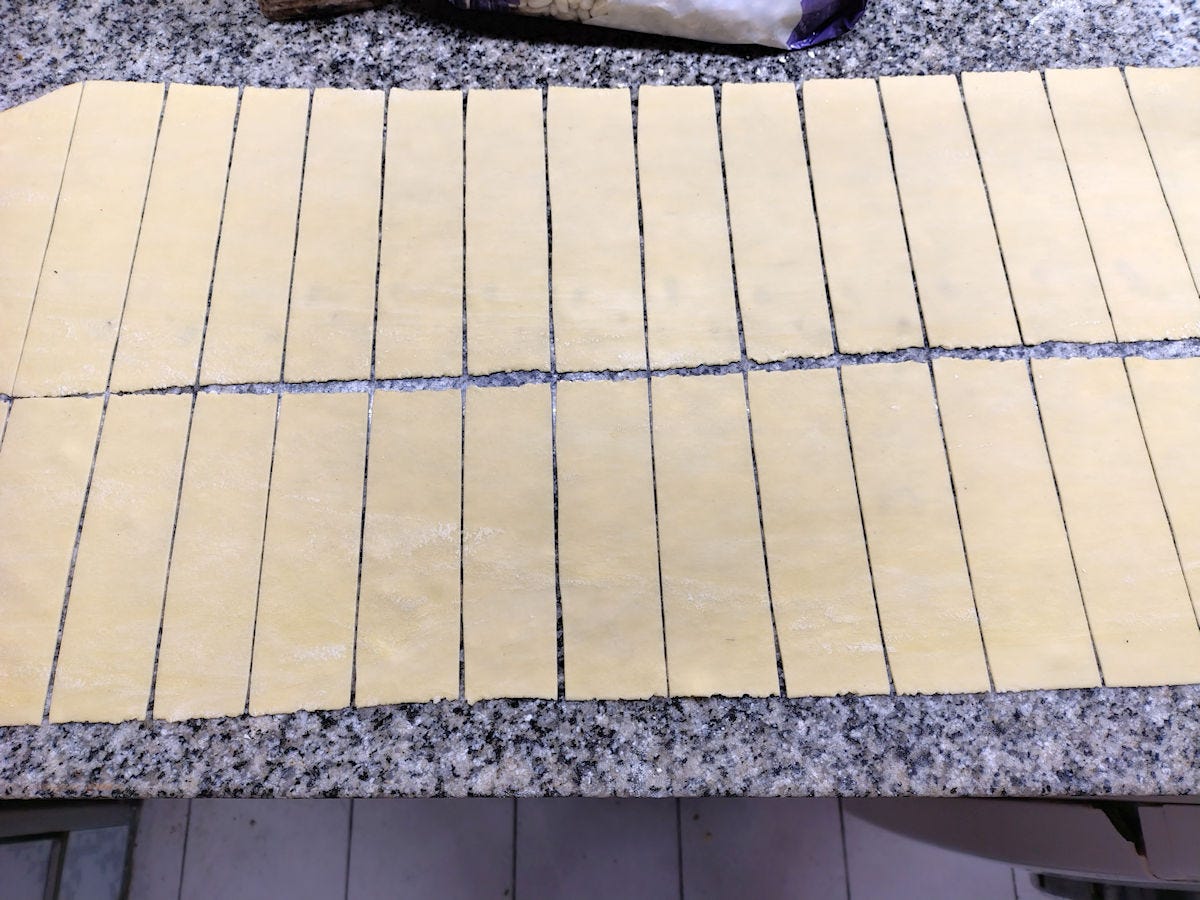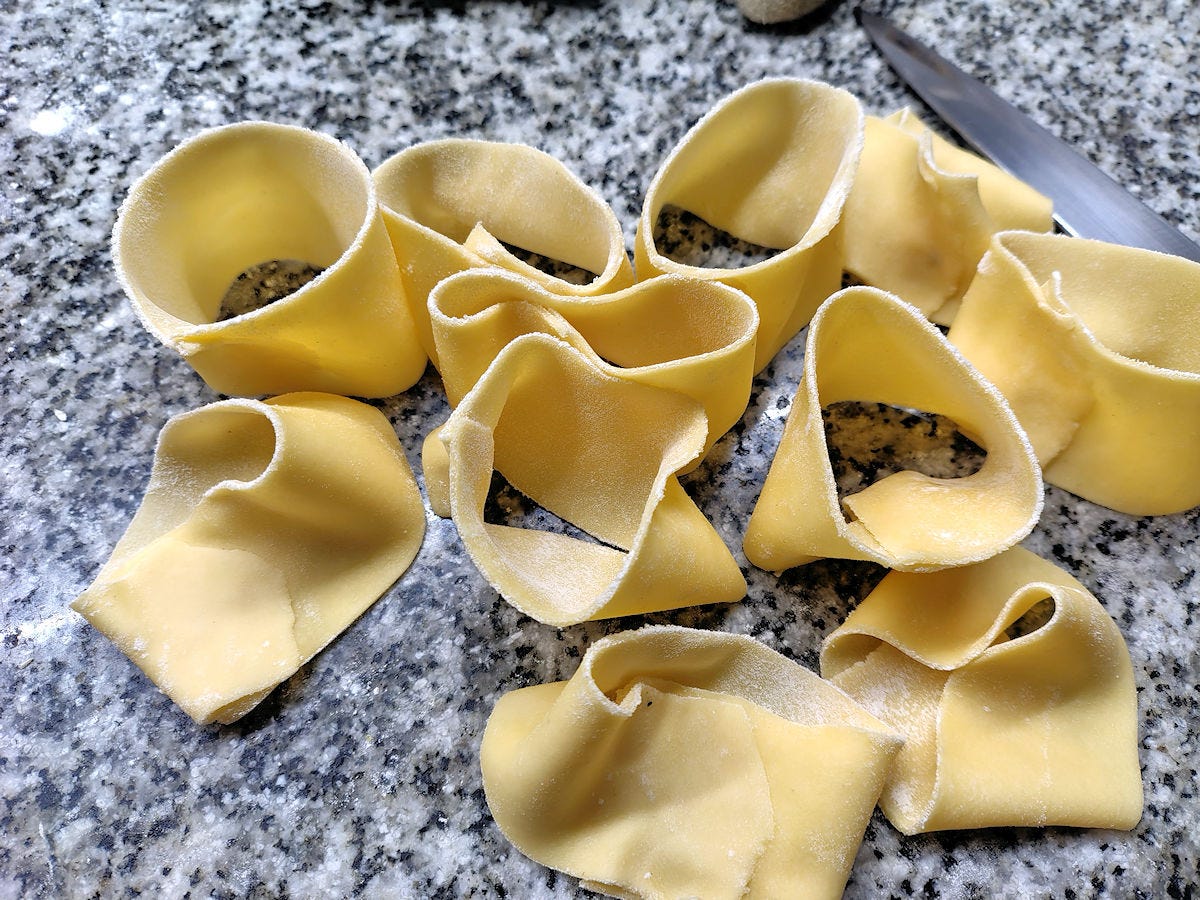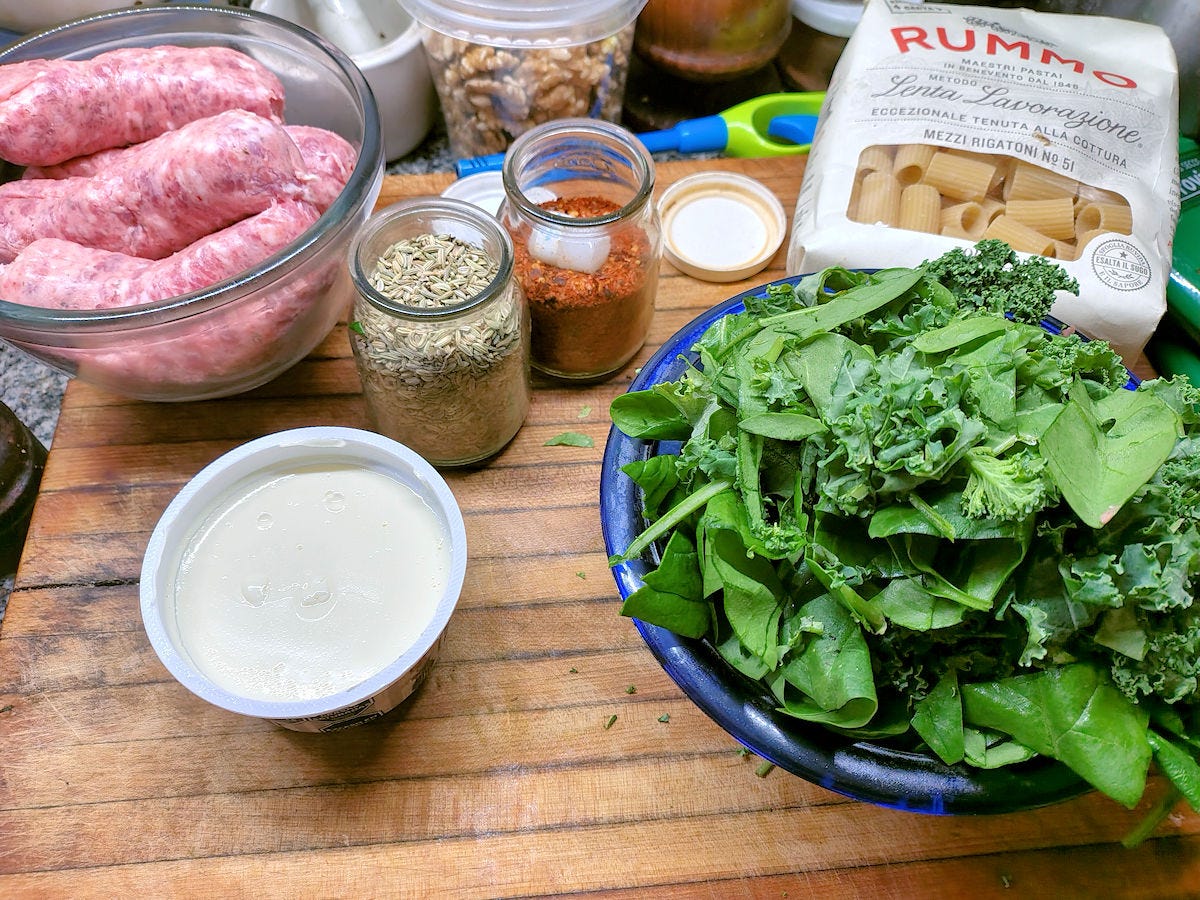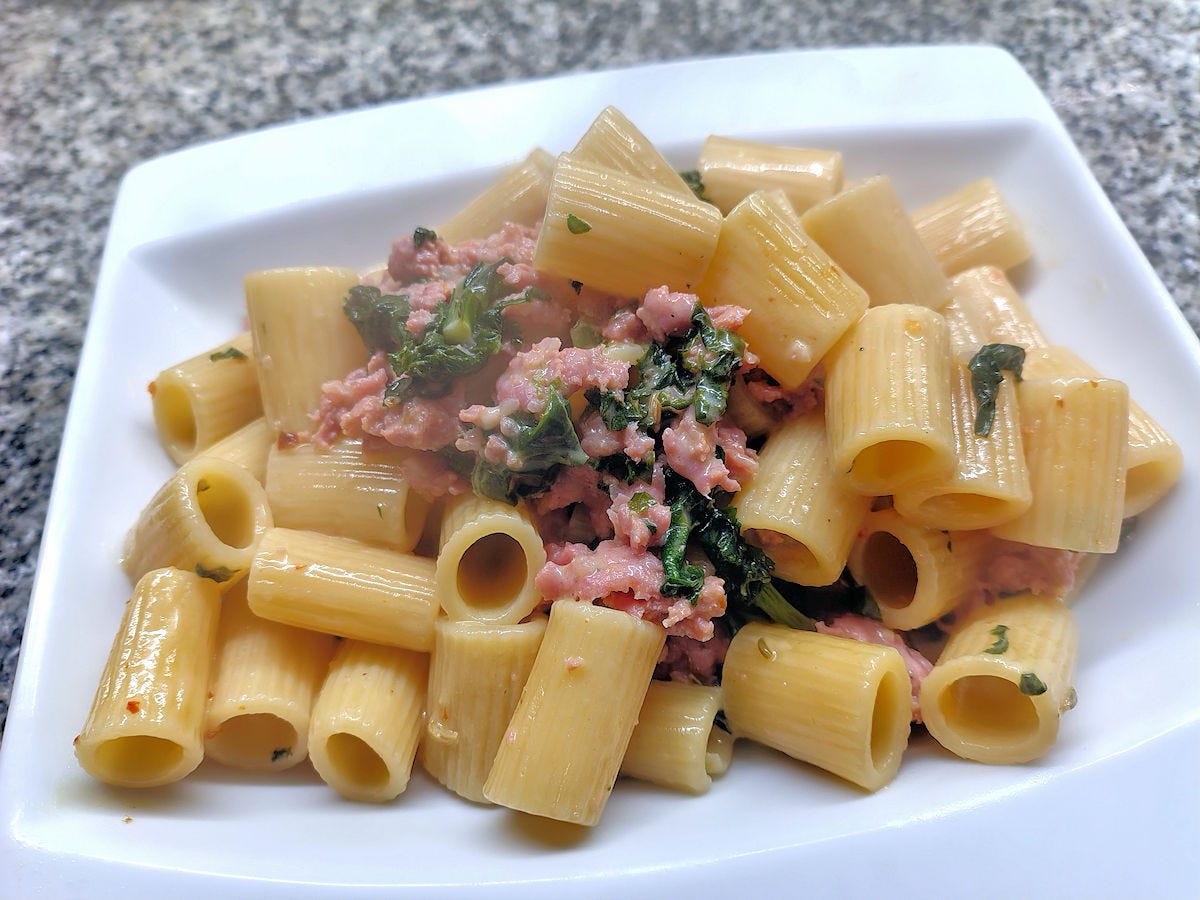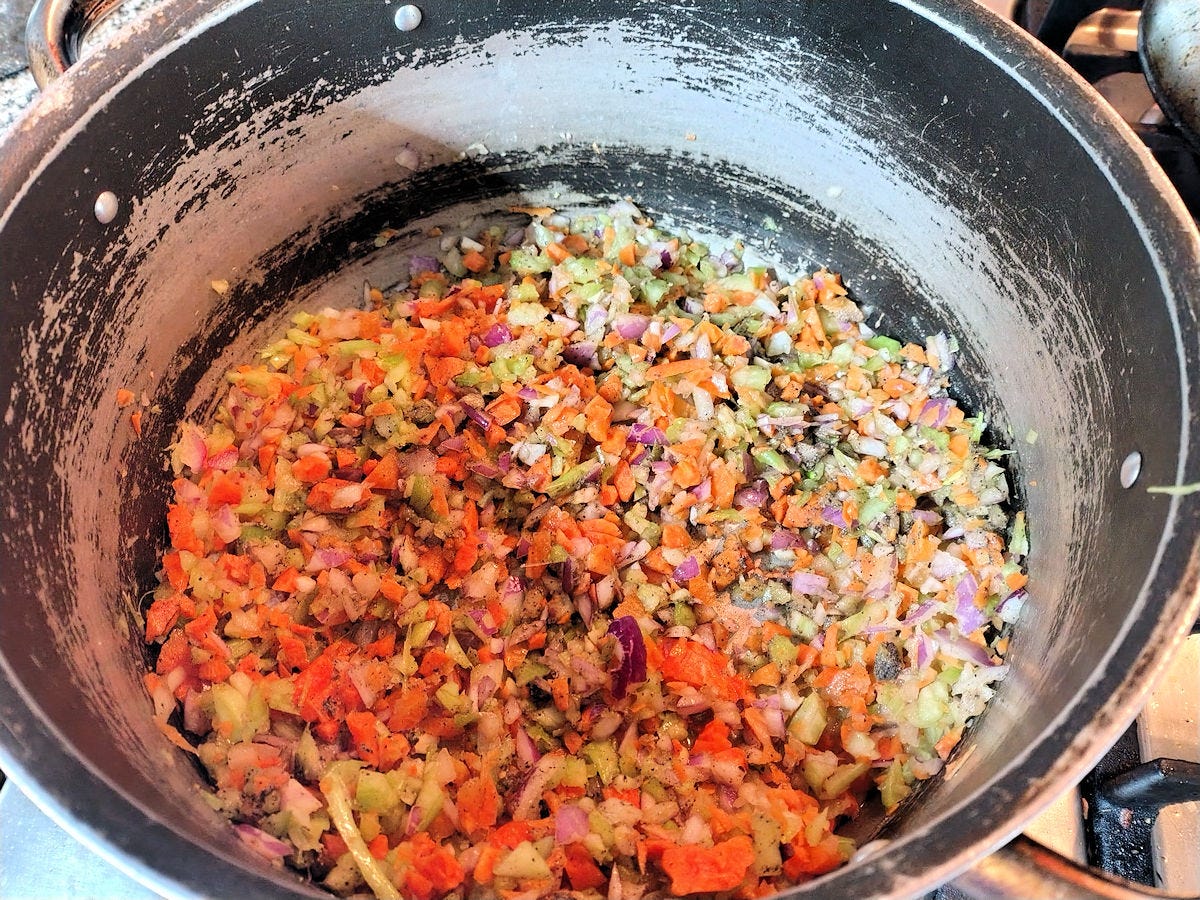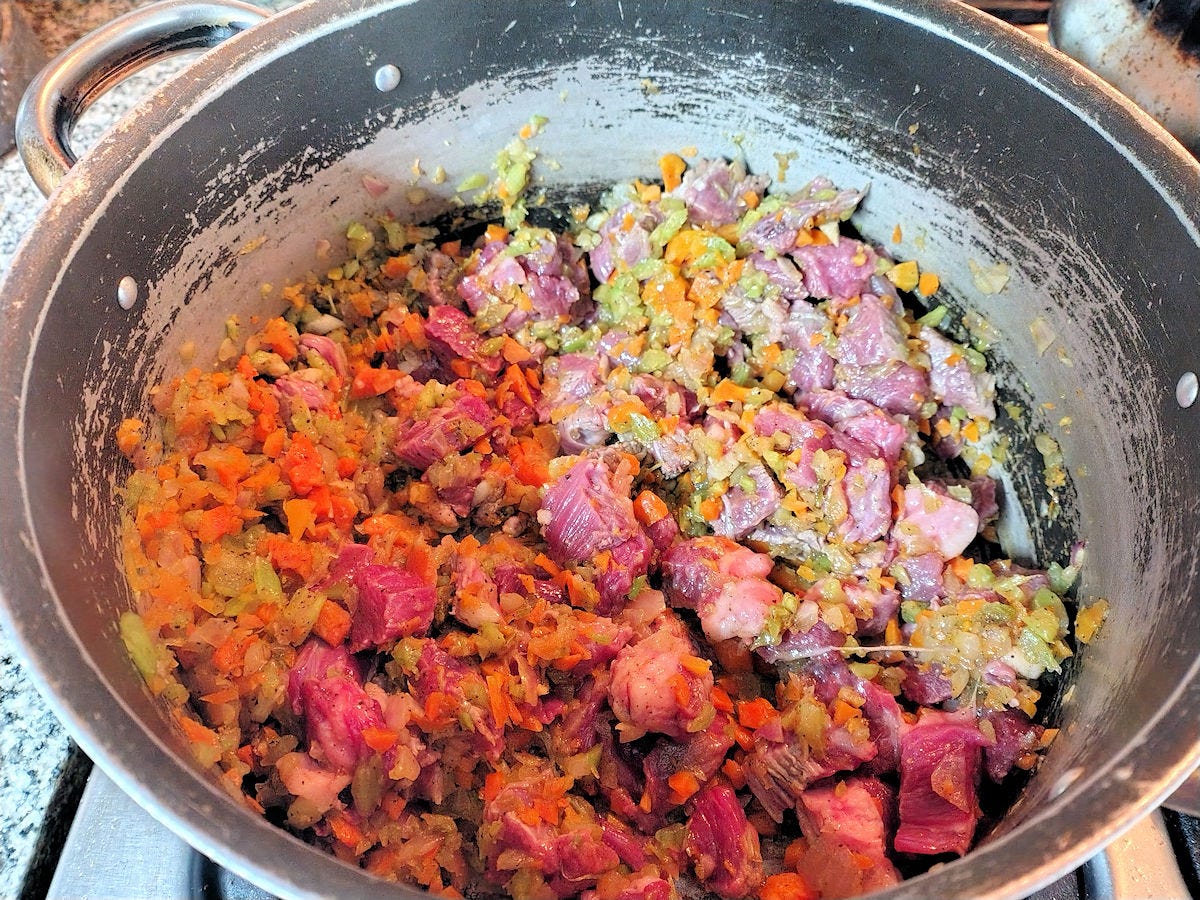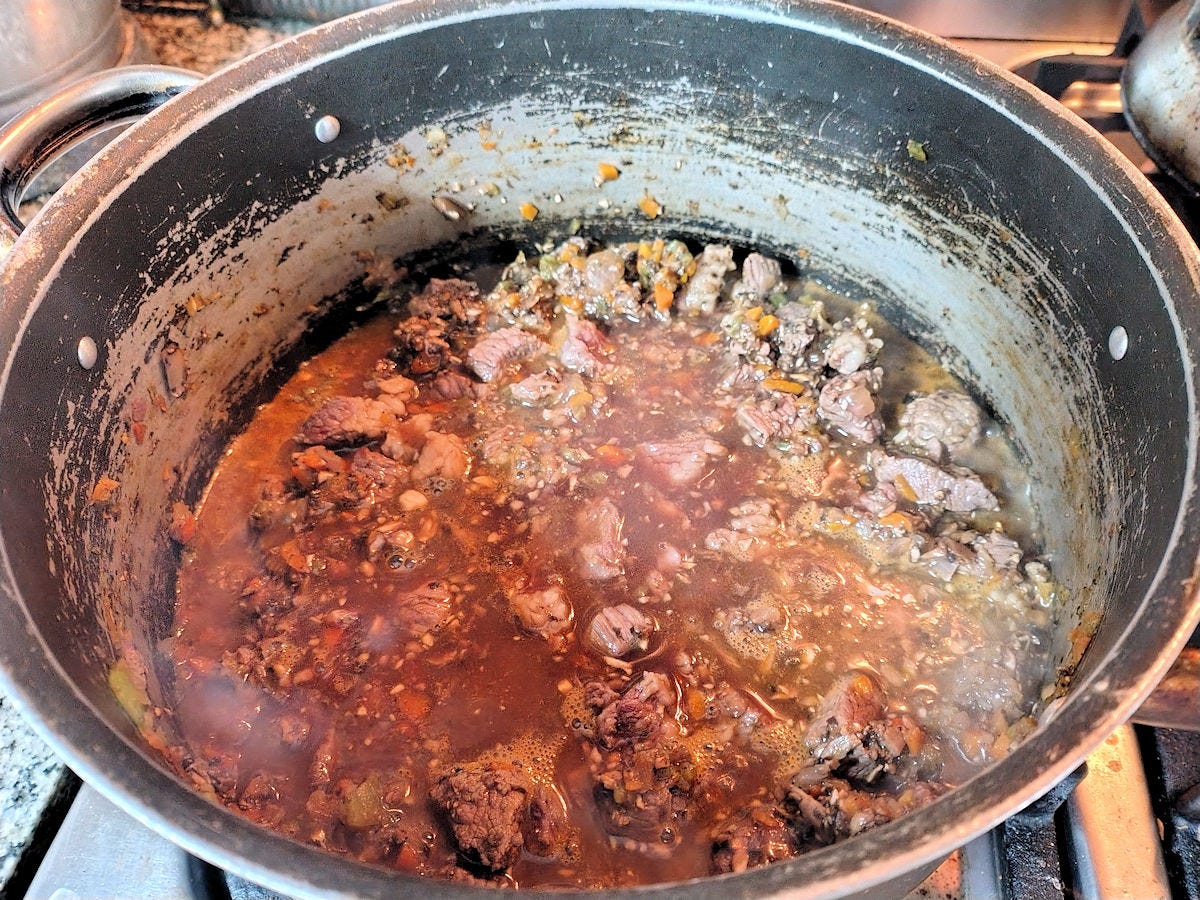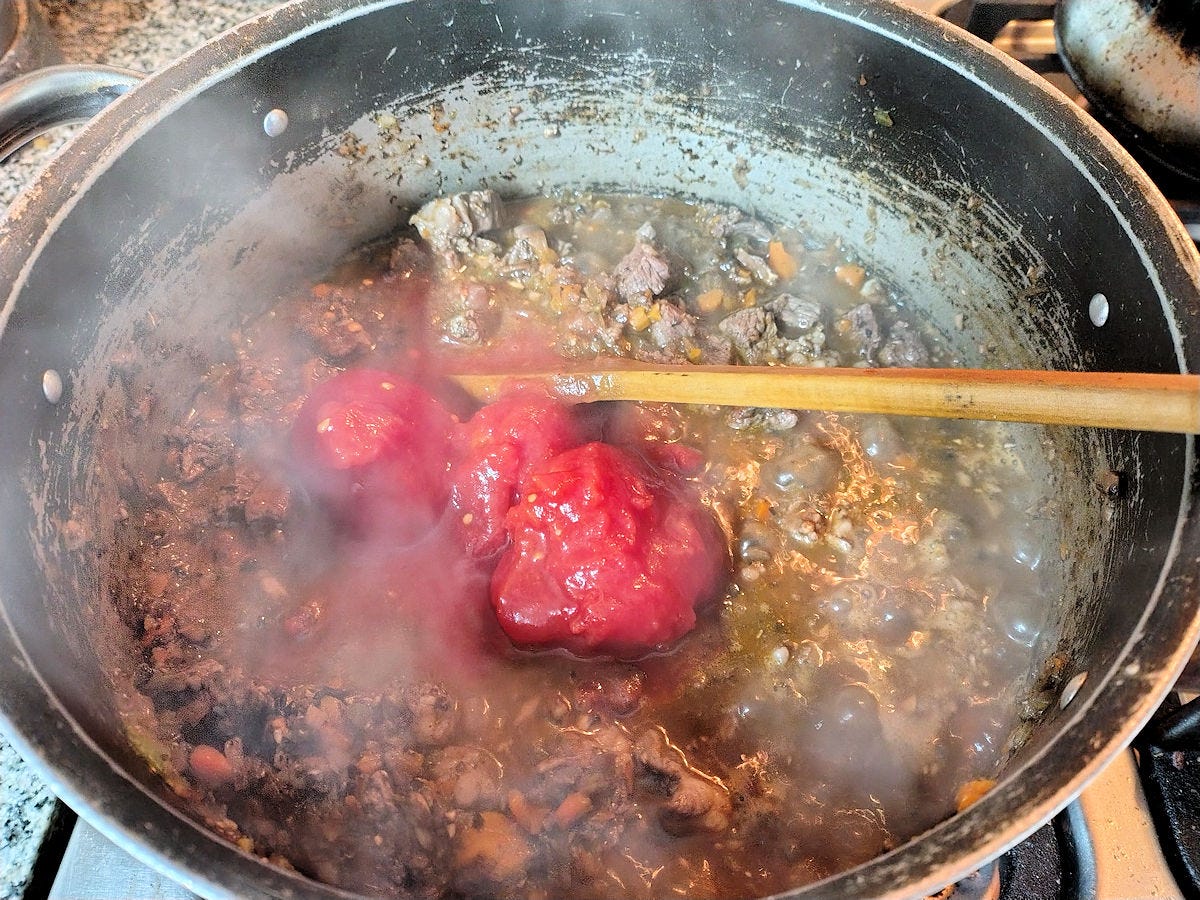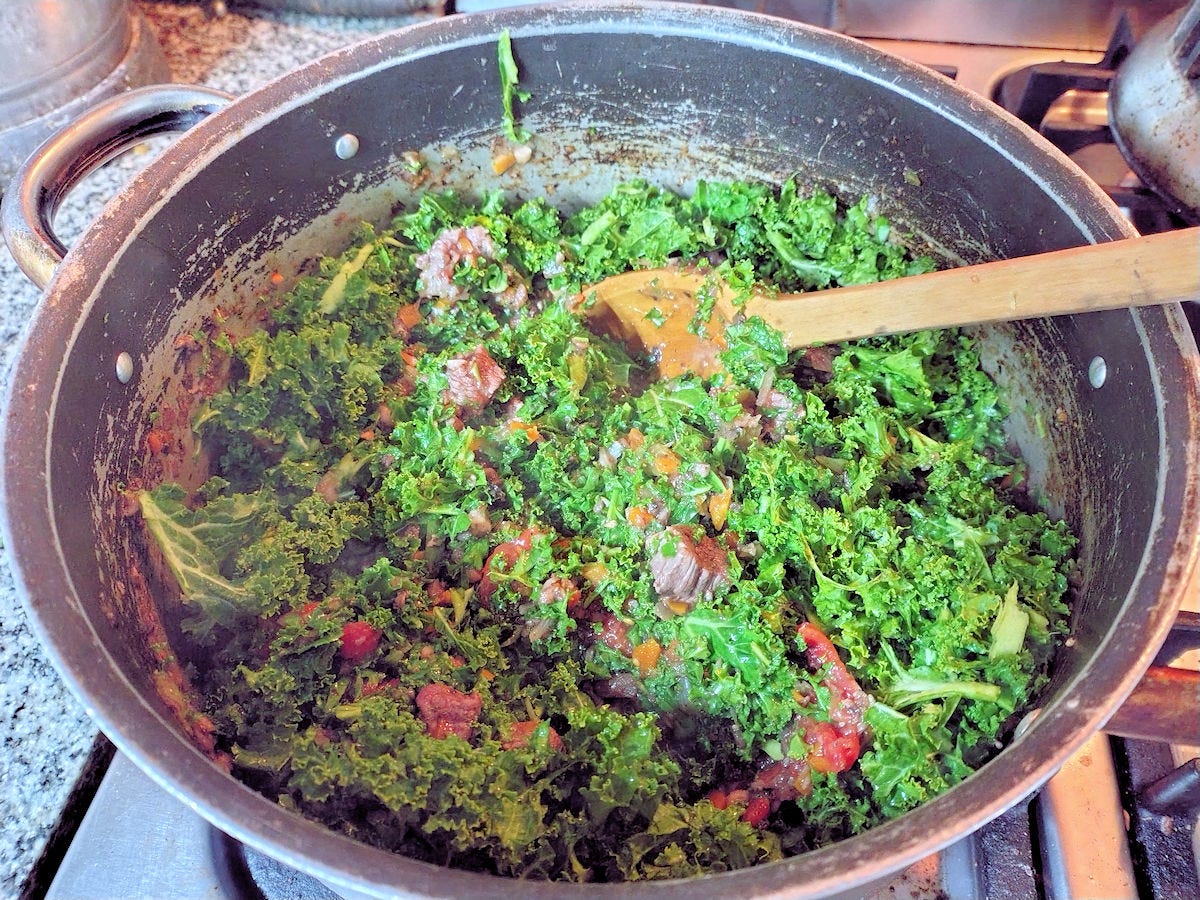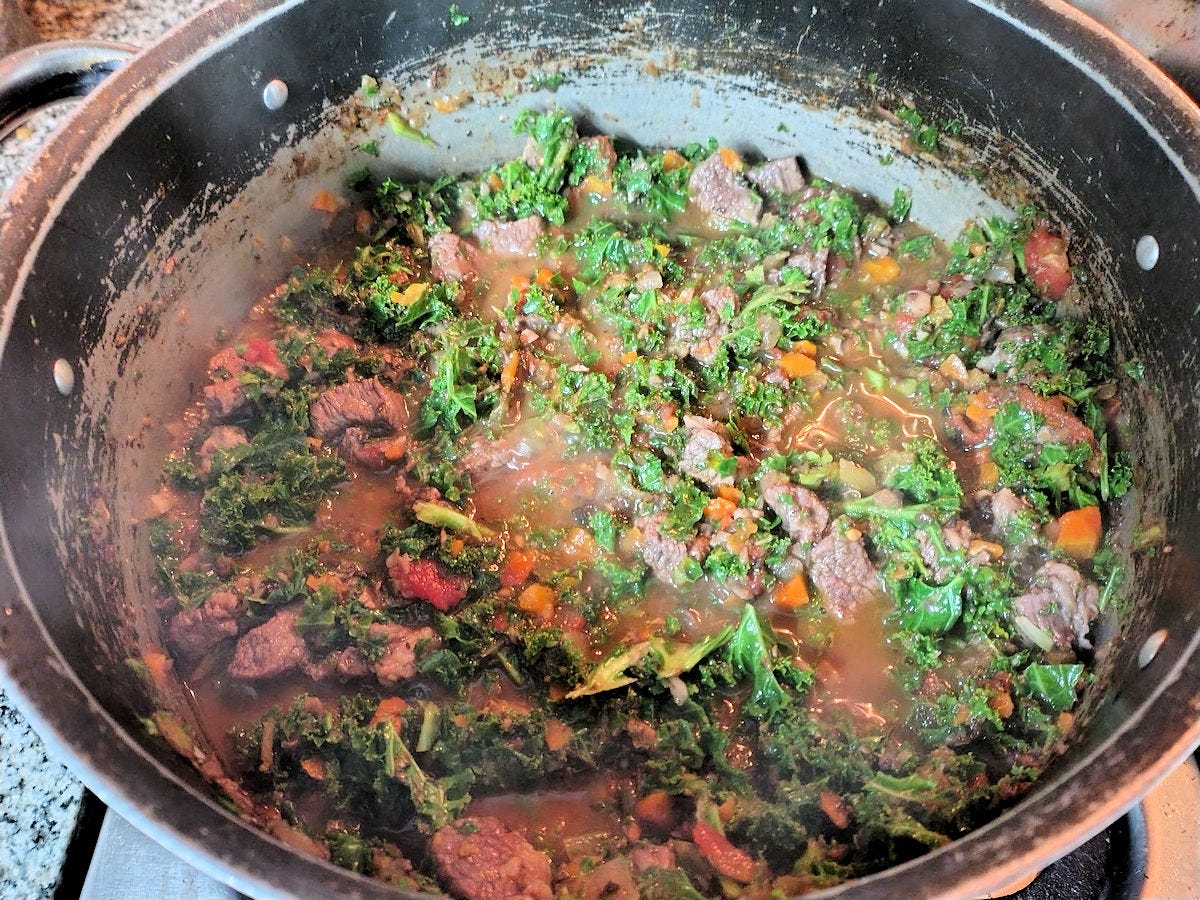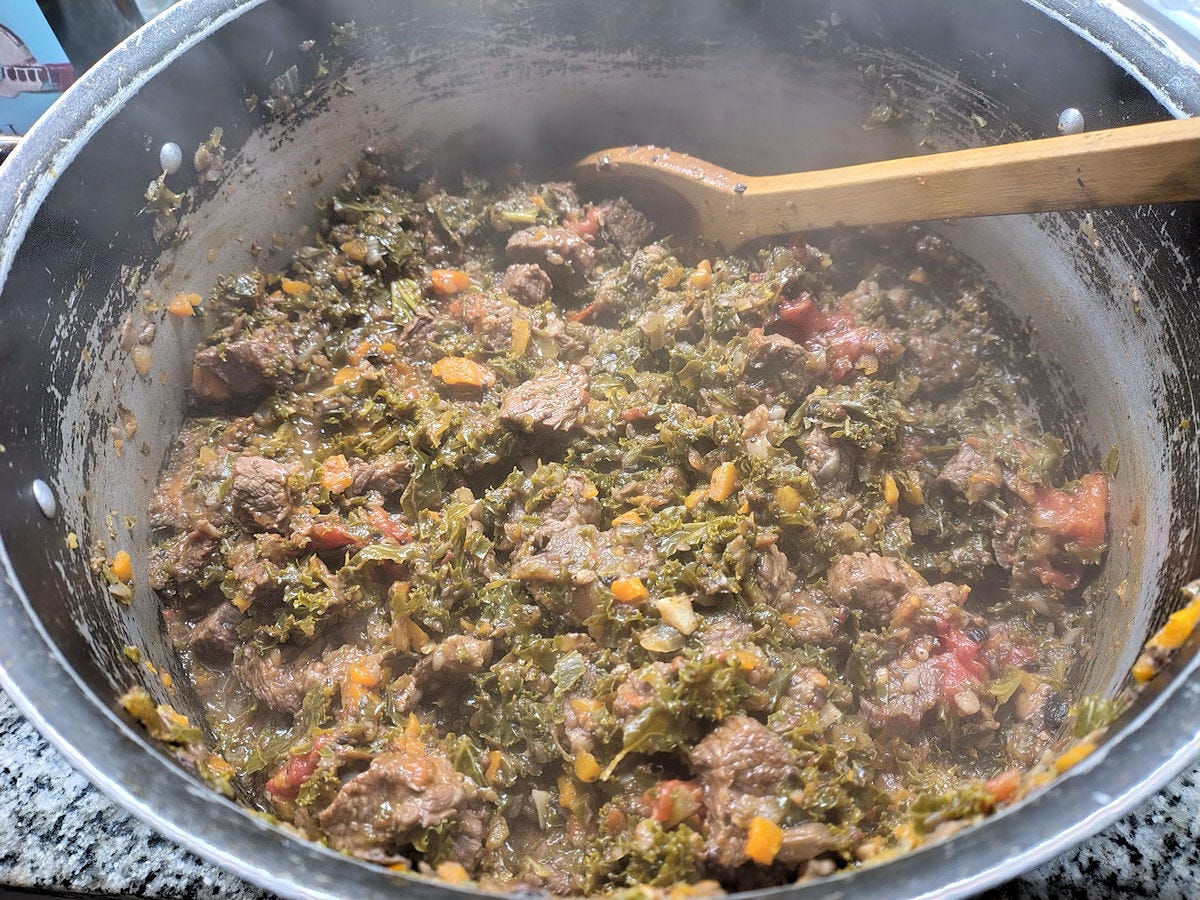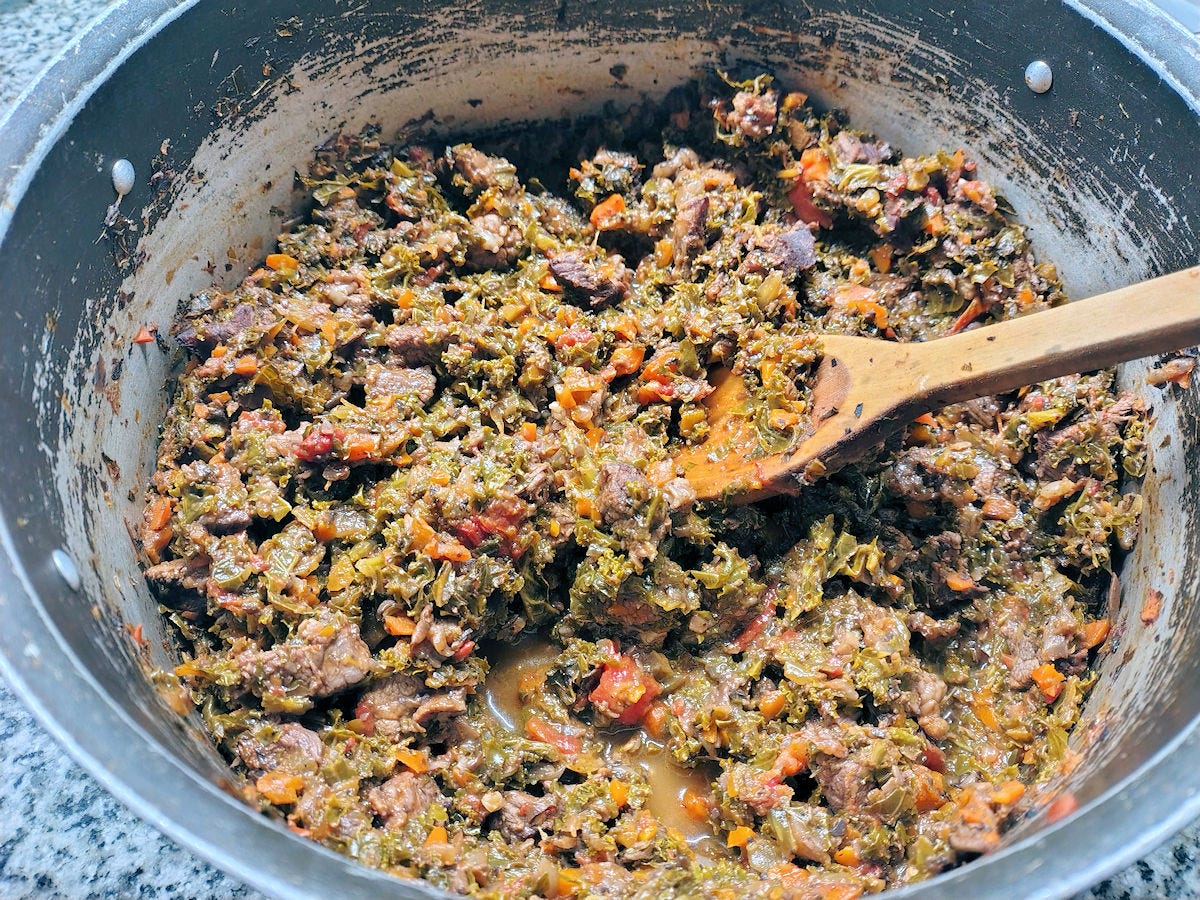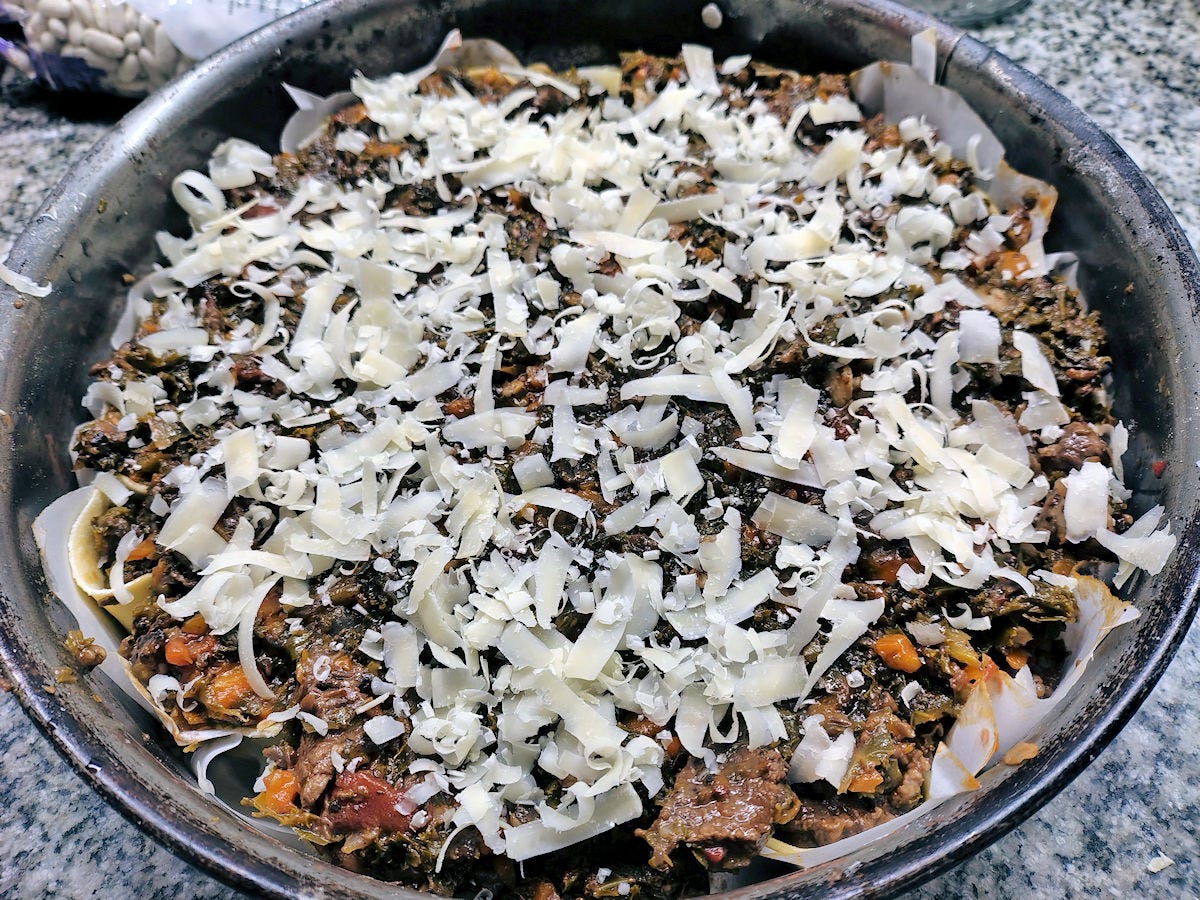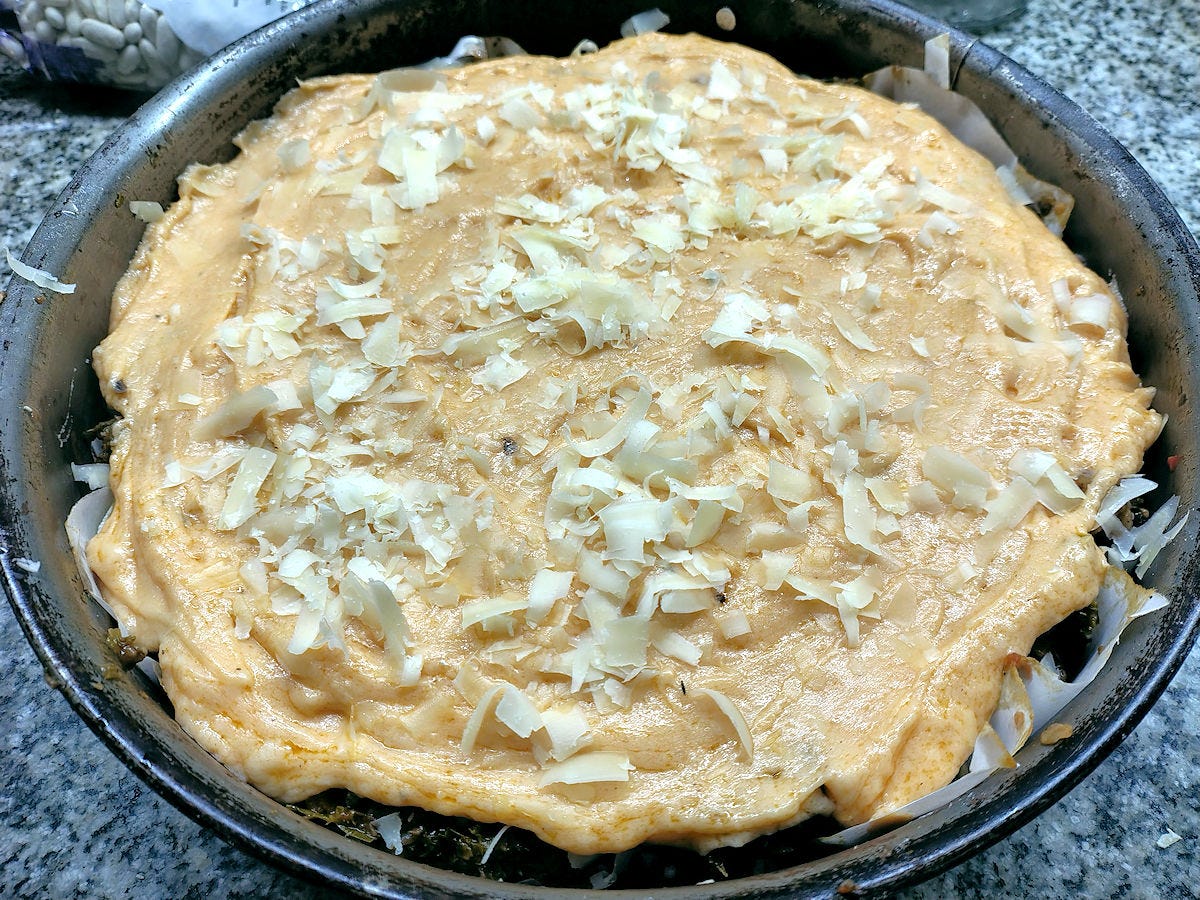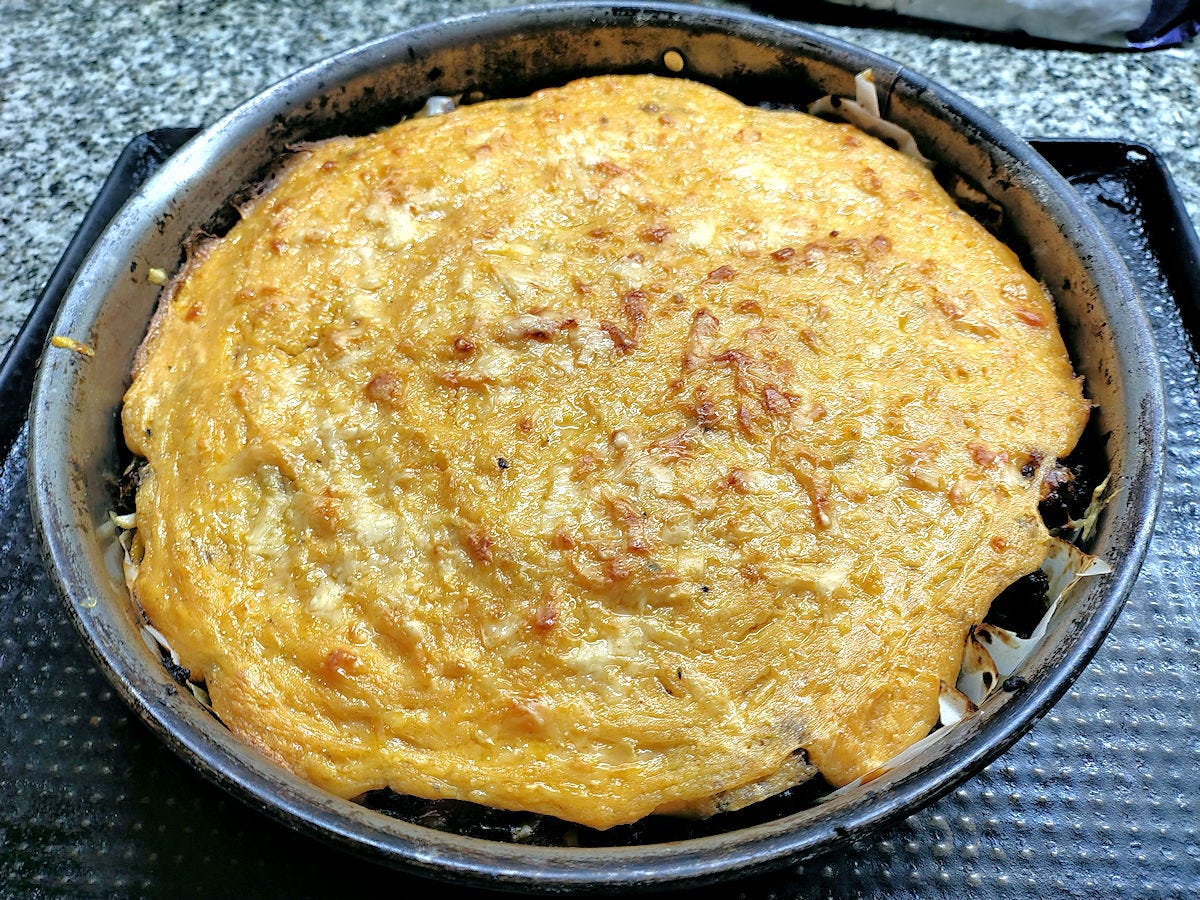We start, of course, with the pasta itself. Paccheri (“pah-KAY-ree”) or Schiaffoni (“ski-ahf-FOH-nee”), respectively Neapolitan dialect and Italian for “full hand” (Greek derivation), meaning an open hand slap of congratulations. It’s basically a large ring shaped pasta - like rigatoni that blew up, or, as some folk have said, like a section of garden hose.
Roll out long strips of semolina pasta, with a length sufficient to just wrap around a pasta rolling pin, or a broomstick handle. You want a diameter of about an inch, or 2.5 cm. And the width of the strips (which becomes the length of the pasta) should be about the same or slightly more. For this recipe I used 200 grams of fine semolina flour, one whole egg and one egg yolk (plus about two tablespoons of water to get it smooth).
Wrap it around your roller or stick. Then roll it back and forth to seal the pasta into a ring.
And, you have paccheri. They have a tendency to collapse, so if you’re not going to use them right away, you might want to find a way to sort of prop them up.
Now, what to do with them? Of course I had something in mind before I set out on this. I’ve just finished reading the five volume Tuscan-setting detective novels by Camilla Trinchieri. They feature a retired NYC detective living in his deceased wife’s hometown in Tuscany. And, of course, he can’t stay retired and gets involved with the local carabinieri in solving various murders. His passion, however, is cooking, and he not only plays around with traditional Tuscan dishes, but also gets a bit inventive, and cooks both for friends and family, as well as working part-time in his wife’s cousin’s restaurant. The descriptions of the dishes he works worth are quite mouthwatering, and I made notes of the ones that stood out, did a bit of research, and set out to make some of them. In this case, a take on paccheri al forno ripieni, or baked stuffed paccheri.
Tangenting…
The first, I threw together last week with store-bought rigatoni, tossed with a simple sauté of Italian spicy fennel sausage (which I couldn’t find here, so I used some good chorizos, stripped their casings, and added fennel seeds and chili flakes), chopped kale, and finished with mascarpone and a little parmesan. I did throw in a splash of white wine to deglaze the pan, even though it was not stated in the book. So good. So simple.
Returning…
Our detective encounters a dish at a local restaurant, where the chef explains that he stuffs paccheri with a classic beef, mushroom, and kale ragú, puts them in a baking dish, covers them with “pink bechamel”, some grated parmesan, and then bakes it like a lasagna. Enough detail was given that it wasn’t hard to throw together a semblance of the idea.
First, the ragú.
The food processor got a workout on this one. Here, a red onion, a fat carrot, a couple of stalks of celery, and a couple of cloves of garlic are blitzed to a fine chop, and then sautéed in olive oil with salt and pepper until soft.
Add in small diced beef - in this case I used beef shoulder, or chuck, about a pound (500gm) of it.
When it’s browned add in about a tablespoon of tomato paste, and cook another minute or so.
Add in about half a pound (250gm) of finely chopped portobello mushrooms and cook until they’ve sweated out most of their liquid.
Deglaze with about a half cup (120ml) of red wine, and cook that for a couple of minutes.
Add in a can of whole (or crushed) peeled tomatoes, and break that up.
One bunch of kale chopped up.
Add enough beef stock to just top it off, turn heat to lowest possible, cover, and cook for about an hour, until the beef is tender. If it gets really dried out, add a splash more of stock or water. You do want it to end up thick, not liquid, but not too early or the beef will be tough.
At the end of the hour, you want a consistency more or less like this.
Set it aside and let it cool.
And, in an oiled baking dish - I used parchment paper too, but in retrospect I don’t think it was necessary, and it ended up sticking to some of the outer parts of the pasta - place the paccheri and fill them with ragú. I basically put about a teaspoonful at a time as I placed them, just to help them keep their shape, and then went back and filled them in once they were all in place. It’s so pretty this way, I kind of just want to top it with some cheese and bake it that way!
But, it gets filled in with the rest of the ragú, getting it in and around and atop the pasta.
Top with a layer of parmesan. In hindsight, I think I’d mix the parmesan in with the ragú to get some cheese flavor down into the lower depths of the dish.
Top with a layer of “pink bechamel”, which is really just a bechamel sauce with some tomato extract added. Classic butter, flour, milk, salt, white pepper, nutmeg other than that. And some more parmesan over the the whole thing.
And bake in a medium hot oven until golden brown on top.
Serve it up and enjoy! The quantities above make for four good sized dinner portions.
Absolutely delicious! I’ll be making this again, albeit it’s a lot of work. Of course, you can use dried paccheri rather than make them. I know some people say, like with lasagna, to just use them dry and add the ragú, but I’ve never liked the texture that comes out. And boiling them, indeed, makes them too soft. An interesting compromise suggested by some, that I find works, is soak the pasta (lasagna noodles, or these paccheri) in cold water for about an hour before using them. They absorb just enough to soften without ending up mush later on.
If I were to make any adjustments to this - I’d probably make a little less sauce, more or less just enough to fill the pasta without that thick layer on top, and I’d probably, as I noted earlier, mix the first layer of parmesan into the cooled ragú.




